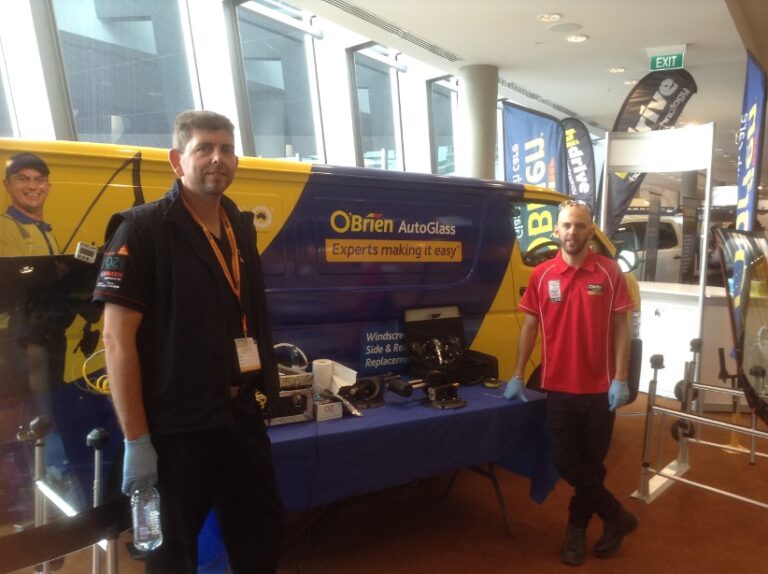The car windscreen has gone through a tremendous revolution in the past two decades. It isn’t just a piece of glass to see through anymore, or something that only protects you from the elements. It is also the place for an increasing itinerary of technology.
Today’s new car comes with a range of so-called Advanced Driver Assistance Systems, or ADAS, such as cameras mounted on the windscreen to warn drivers of lane departures and activate emergency braking systems.
“The safest place for a camera is to have it behind the windscreen and out of the weather,” said Steve Grech, technical training manager for O’Brien. “It’s normally hidden behind the mirror area or near the mirror area, higher up so it has a better view.”
It means there also have been big changes in technology required to remove and replace new windscreens when they are damaged.
Specialised tools and systems to calibrate the on-board technology are now crucial to ensure the cameras are aligned and do the job they were designed to do – keep the driver and others safe and save lives.
Obviously, the costs of getting a windscreen replaced today is higher than it was a few decades ago, when the repairer needed basic tools to complete the installation.
“Nowadays we use an adhesive to bond the windscreen and most vehicles have a lot more variants,” Grech said. “You might have a Mazda3, for example, which will have as many as ve different types of windscreen. Some will be for the basic model, up to the top of the line model, and as you go up the range the more attachments there are to the glass, and so the more expensive the glass will be.”
Looking forward, we will see more hardware and functions attached and projected onto the windscreen and we will see more Head Up Display functions connecting the driver to the vehicle.
This was once the domain of jet ghters but will eventually become the norm in our motor vehicles so keeping up with the technology is a key driver in our industry.
O’Brien, a unit of U.K.-based Belron, has been operating in Australia in glazing for over 90 years and its name is now synonymous with windscreen replacement. While O’Brien has a lot of competition in Australia, they are generally smaller operators.
Grech stated that about 15 percent of O’Brien’s work was probably in repairing windscreens. This part of the business started over 25 years ago. Their technology kit to repair a windscreen is so complex it has been patented and the resin technology is developed by a dedicated R&D team who are constantly improving the formula which is exclusive to O’Brien.
Most damage to a windscreen starts from a stone chip and if the eet driver gets to them early enough they can generally be repaired. The repair takes about 30 minutes compared with about an hour for a replacement.
“Obviously it’s much cheaper and the resin that we use makes the windscreen strong again.”
“The result always depends on how fresh the damage is,” Grech said, adding that the nished appearance will also be better if it is done quickly.
A repair can be done by a mobile service unit though new vehicle windscreen replacements which are very complex and when calibration of the ADAS is required it needs to be done in one of O’Brien’s 56 Australian branch workshops.
The good news is that while technology may have forced up the price of a new windscreen, it has also probably helped cut the rate of damage as our congested cities have also played their part in reducing damage because we don’t drive as fast as we used to.
So next time you hear that ‘beep beep beep’ on the lane departure warning signal, you can appreciate a little more how much goes into ensuring it keeps on keeping you safe.
The windscreen on a modern motor vehicle has always been a critical part of the safety system designed into the vehicle by the manufacturer in regards to airbag deployment and structural support, it now has many new technologies including cameras and Lidar, Head up display incorporated in, around and attached to the windscreen.
Correctly installed windscreens that take the ever evolving technology into account is critical to maintain the safety features and structural integrity in your vehicle. This technology growth is here to stay and we need to stay abreast of it as we move to more automated functions in vehicles and inevitably the driverless vehicle age.






